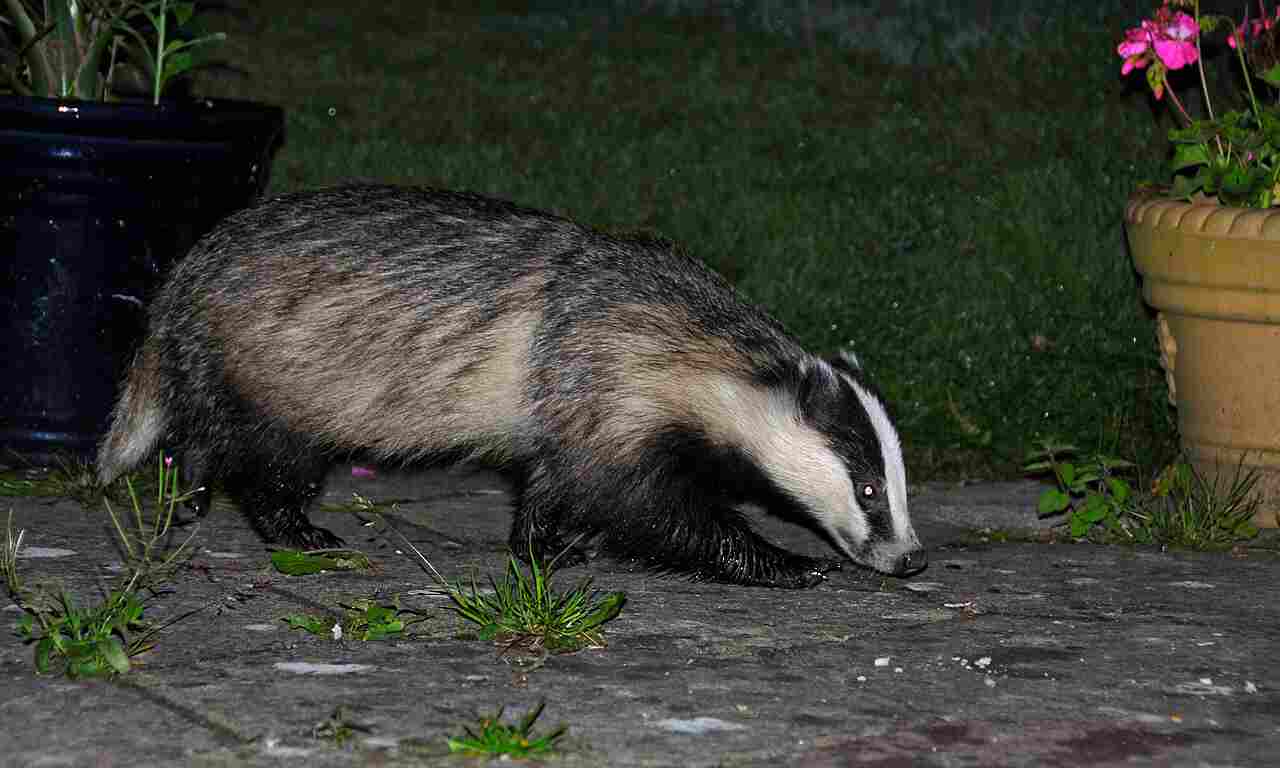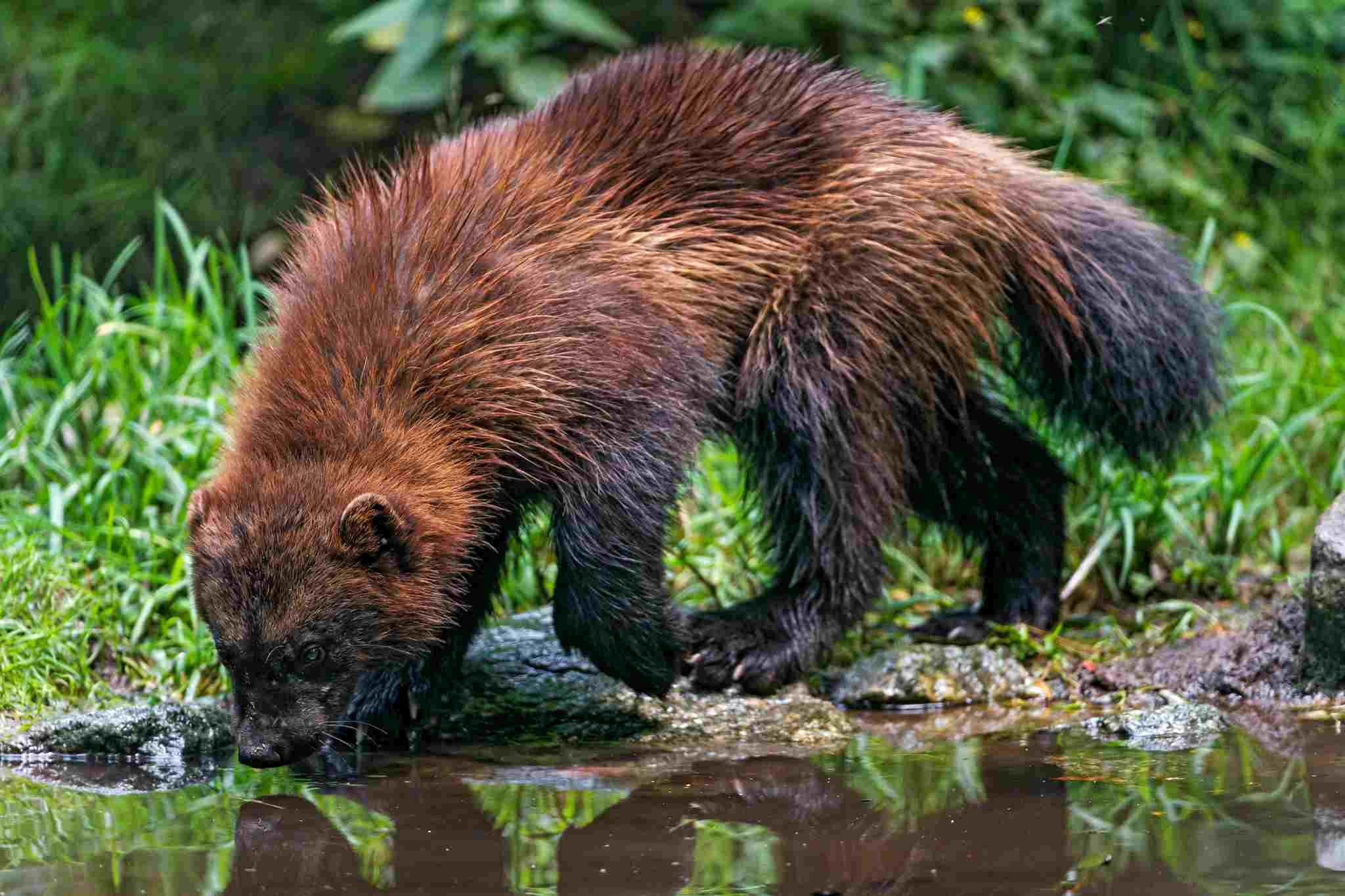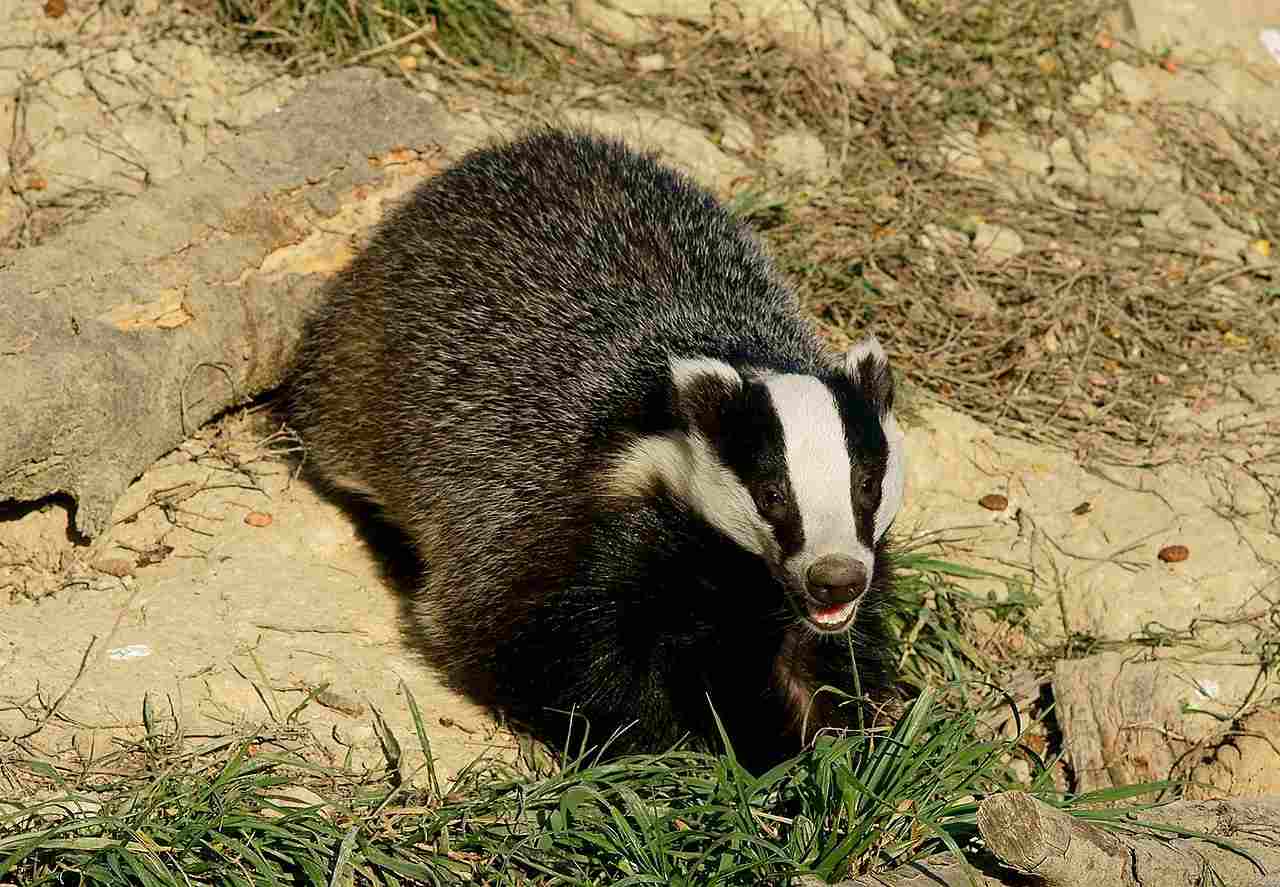American Badger Vs Honey Badger Who Would Win, and Overall Comparison
American badgers and honey badgers, both belonging to the Mustelidae family, showcase unique attributes within the animal kingdom. American badgers, known for their aggression, and honey badgers, distinguished by their formidable aggressiveness, present an intriguing scenario for a theoretical showdown. This analysis delves into their taxonomy, appearance, size, weight, and aggressiveness to speculate on the potential outcome of a one-on-one confrontation between these two badger species.
American Badger vs Honey Badger: Evaluating the Likely Victor in a Confrontation
In a hypothetical one-on-one confrontation between an American badger and a honey badger, the honey badger is likely to emerge victorious due to its heavier weight, thick fur, and higher level of aggressiveness, which collectively provide a considerable advantage.
I). Weight Advantage:
– Honey badgers, generally heavier than their American counterparts, possess a weight advantage that contributes to their physical dominance. This added mass can enhance the honey badger’s ability to withstand and control the dynamics of a confrontation with an American badger.
II). Thick Fur:
– The honey badger’s thick fur serves as a protective layer, offering resistance against the bites and scratches from its opponent. This protective barrier may reduce the impact of the American badger’s aggression and provide an additional layer of defense in the confrontation.
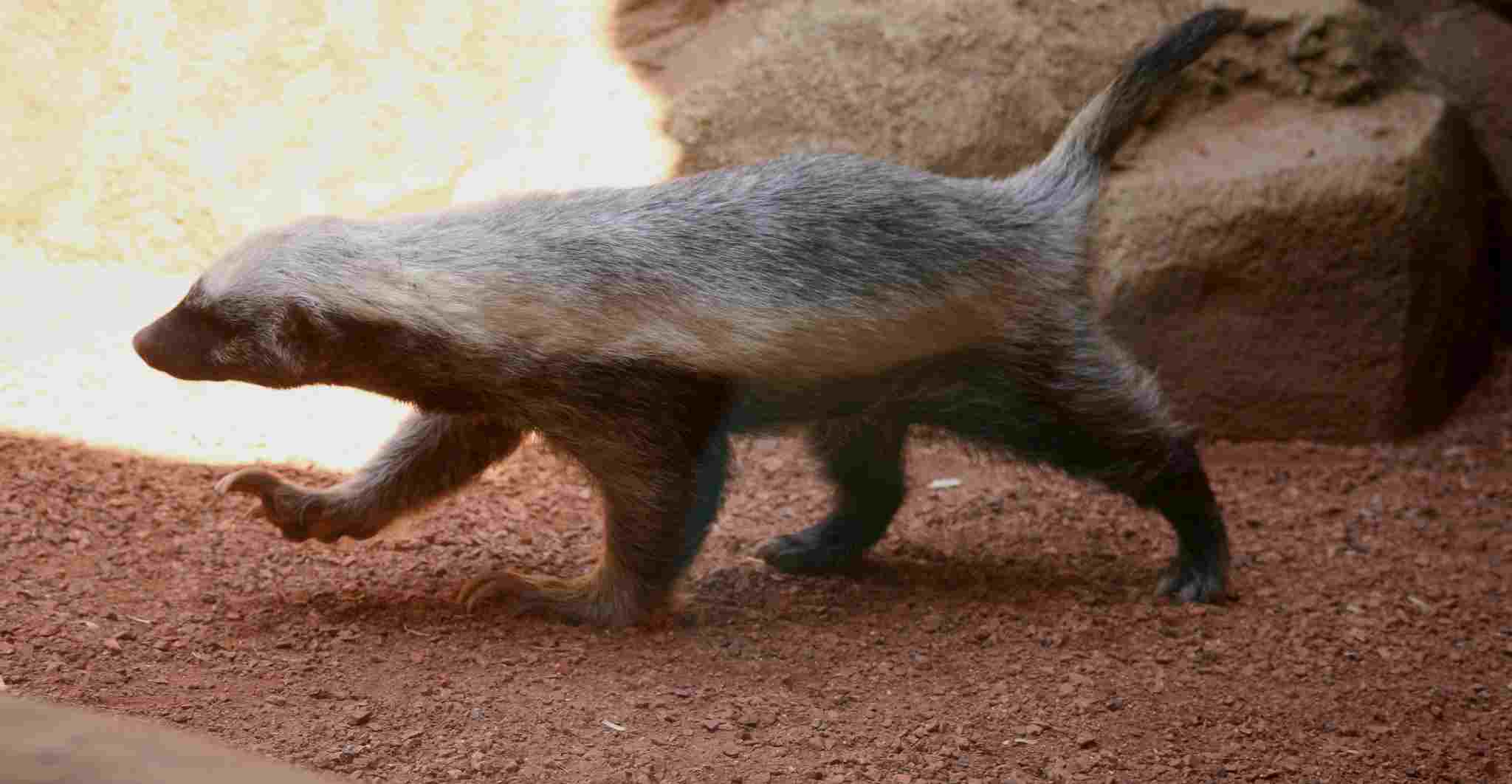
III). Aggressiveness of the Honey Badger:
– Honey badgers are renowned for their intense aggressiveness, often taking on animals much larger than themselves. In a confrontation with an American badger, the honey badger’s heightened aggression could prove to be a decisive factor, allowing it to take control of the encounter and overpower its opponent.
IV). Overall Dominance:
– The combination of heavier weight, protective fur, and heightened aggressiveness positions the honey badger for overall dominance in a one-on-one clash. While the American badger is aggressive, these factors collectively contribute to a scenario where the honey badger is likely to prevail in a physical confrontation.
*Details of Comparison
| Criteria | American Badger | Honey Badger |
| Taxonomy | Mustelidae: Taxidea taxus |
Mustelidae: Mellivora capensis
|
| Appearance | Grizzled fur, white head stripe |
Stocky, tough skin, dark coat
|
| Size | 20-30 inches (length) |
24-30 inches (length)
|
| Weight | 15-30 pounds | 20-35 pounds |
| Bite Force | Powerful for hunting rodents |
Strong with crushing capabilities
|
| Offensive Advantages | Sharp claws, powerful bite for digging |
Strong jaws, fearless confrontations
|
| Defensive Advantages | Quick, agile, thick fur |
Tough skin, odor defense mechanism
|
| Speed | Moderate land speed, short bursts |
Agile with surprising bursts
|
| Agility | Agile in burrows and hunting |
Highly agile, climbs trees
|
| Capacity | Digging, short bursts, agility |
Versatile – digging, climbing, fearless
|
| Habitat Preference | Grasslands, meadows, open fields |
Varied – grasslands, savannas, forests
|
| Tracks | Elongated, clawed tracks |
Compact, may show climbing or digging
|
| Lifespan | 5-7 years in the wild |
7-8 years in the wild
|
| Feeding | Carnivorous, rodents, insects, plants |
Omnivorous, mammals, birds, reptiles
|
| Social Behavior | Mostly solitary, territorial |
Generally solitary, tolerant of others
|
| Reproduction | Polygamous mating, late summer/fall |
Polygamous mating, variable breeding
|
| Parental Behavior | Female cares for young, weaned quickly |
Female primary caregiver, longer association
|
| Proximity to Humans | Rural and suburban areas |
Diverse habitats, including human areas
|
| Behavior Toward Humans | Elusive, may show aggression if threatened |
Assertive, confrontational when threatened
|
| Danger to Humans | Rarely poses direct threat |
Potential danger, especially when provoked
|
| Precautions | Allow escape route, observe from distance |
Keep a safe distance, exercise caution
|
| Conservation Status | Least Concern, localized declines possible |
Near Threatened, regional variations
|
| Similarities |
Family Mustelidae, solitary behavior, polygamous mating
|
|
| Differences |
Habitat adaptability, confrontational behavior
|
Key Points:
- Taxonomy: Both belong to the Mustelidae family.
- Physical Traits: American badger has grizzled fur, honey badger has tough, dark skin.
- Size and Weight: Similar, with honey badger slightly larger.
- Offensive Advantages: Both have strong bites, honey badger is fearless.
- Defensive Advantages: American badger has thick fur, honey badger has tough skin and odor defense.
- Habitat: American badger prefers grasslands, honey badger is adaptable.
- Behavior: Both generally solitary, but honey badger more tolerant of others.
- Danger to Humans: American badger rarely poses a threat, honey badger can be confrontational.
- Conservation Status: American badger generally stable, honey badger faces regional threats.
- Similarities and Differences: Both share mustelid traits, but differ in habitat adaptability and behavior.
1. Taxonomy:
American Badger (Taxidea taxus):
Kingdom: Animalia
Phylum: Chordata
Class: Mammalia
Order: Carnivora
Family: Mustelidae
Genus: Taxidea
Species: Taxus
Honey Badger (Mellivora capensis):
Kingdom: Animalia
Phylum: Chordata
Class: Mammalia
Order: Carnivora
Family: Mustelidae
Genus: Mellivora
Species: Capensis
2. Appearance:
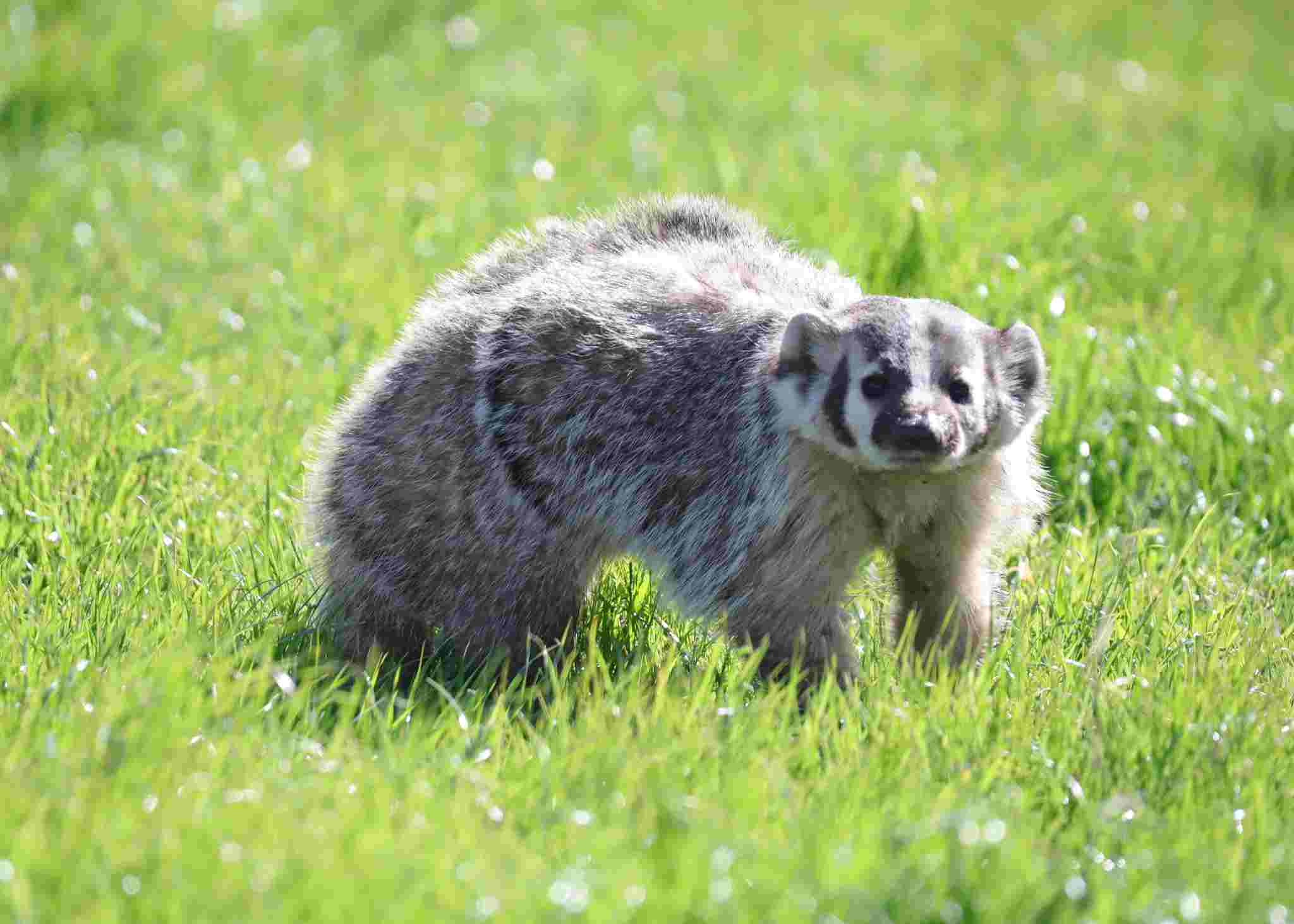
American Badger
Short legs, sturdy build.
Grizzled fur, pale to dark brown with a distinctive white stripe on the head.
Head is broad with a short, pointed snout.
Honey Badger:
Stocky body with loose, tough skin.
Coat color ranges from grey to black, often with a lighter dorsal stripe.
Head is small with a powerful jaw.
Comparison: While both have stocky builds, the American badger’s distinctive head stripe contrasts with the honey badger’s darker coat and smaller head.
Ecological Implications: Their different appearances may be adaptations to their respective environments, aiding in camouflage or recognition within their habitats.
3. Size:
American Badger:
Length: 20 to 30 inches (excluding tail).
Tail length: 4 to 6 inches.
Shoulder height: 9 to 11 inches.
Honey Badger:
Length: 24 to 30 inches (excluding tail).
Tail length: 6 to 12 inches.
Shoulder height: 9 to 11 inches.
Comparison: Similar in size, both badgers share a compact build suited for digging and burrowing.
Ecological Implications: Size adaptation may enhance agility and maneuverability in confined spaces like burrows.
4. Weight:
American Badger:
Weight: 15 to 30 pounds.
Honey Badger:
Weight: 20 to 35 pounds.
Comparison: Close in weight, both badgers possess robust builds, contributing to their burrowing lifestyles.
Ecological Implications: Weight impacts energy expenditure; a balance is crucial for survival in their specific ecological niches.
5. Bite Force:
American Badger:
Powerful bite for hunting rodents and small mammals.
Honey Badger:
Strong bite with crushing capabilities, even able to break the shell of tortoises.
Comparison: While both have formidable bites, the honey badger’s ability to crush tough prey sets it apart.
Ecological Implications: Bite force influences prey choice and hunting strategies, affecting the badgers’ ecological roles as predators.
6. Physical Offensive Advantages:
American Badger:
Sharp claws and powerful bite for digging and capturing prey.
Well-adapted for hunting in burrows.
Honey Badger:
Strong jaws and claws, capable of breaking into beehives for honey and larvae.
Fearless nature, confronting larger predators.
Comparison: Both possess strong offensive capabilities, but the honey badger’s fearlessness provides a unique advantage.
Ecological Implications: Offensive adaptations influence their roles as predators, impacting the balance of prey populations in their ecosystems.
7. Physical Defensive Advantages:
American Badger:
Thick fur provides some protection.
Quick and agile, able to escape predators by burrowing.
Honey Badger:
Tough, loose skin provides protection against bites.
Can emit a foul-smelling odor as a defense mechanism.
Comparison: Both badgers have defensive adaptations, with the honey badger’s skin and odor-based defense being distinctive.
Ecological Implications: Defensive strategies influence interactions with other species, affecting the badgers’ roles in their ecosystems.
8. Speed:
American Badger:
Moderate speed on land, adapted for short bursts of energy.
Honey Badger:
Agile and quick, capable of surprising bursts of speed.
Comparison: While not built for sustained speed, the honey badger exhibits more agility in short bursts compared to the American badger.
Ecological Implications: Speed impacts hunting success and escape abilities, contributing to their roles as predators and prey in ecosystems.
9. Agility:
American Badger:
Agile in navigating through burrows and confined spaces.
Quick reactions during hunting and evading predators.
Honey Badger:
Highly agile, adept at climbing trees and navigating varied terrain.
Comparison: Both badgers display agility, but the honey badger’s ability to climb and maneuver in diverse environments sets it apart.
Ecological Implications: Agility influences their ability to access different food sources and evade predators, shaping their ecological roles.
10. Overall Physical Capacity:
American Badger:
Well-adapted for digging and burrowing.
Suited for short bursts of speed and agility.
Honey Badger:
Versatile, excelling in digging, climbing, and navigating various terrains.
Fearless and determined in confrontations.
Comparison: While both badgers share burrowing adaptations, the honey badger’s versatility and fearlessness contribute to its overall physical capacity.
Ecological Implications: Their physical capacities shape their roles in ecosystems, influencing interactions with other species.
11. Habitat Preference(s):

American Badger:
Grasslands, meadows, and open fields.
Prefers areas with suitable burrowing opportunities.
Honey Badger:
Varied habitats including grasslands, savannas, and forests.
Adaptable to different environments.
Comparison: Both badgers show adaptability, but the honey badger’s wider habitat range reflects its versatility.
Ecological Implications: Habitat preferences determine their impact on local fauna and flora, influencing ecosystem dynamics.
12. Tracks:
American Badger:
Clawed tracks with a distinctive elongated shape.
Usually spaced widely due to their loping gait.
Honey Badger:
Clawed tracks with a more compact shape.
May show signs of climbing on trees or digging.
Comparison: While clawed tracks are common to both, the honey badger’s tracks may exhibit climbing or digging characteristics.
Ecological Implications: Tracking studies help understand their movements, contributing to conservation and management efforts.
13. Lifespan:
American Badger:
Typically 5 to 7 years in the wild.
Honey Badger:
Estimated 7 to 8 years in the wild.
Comparison: Both badgers have relatively short lifespans, with the honey badger having a slightly longer one.
Ecological Implications: Lifespan affects population dynamics and reproductive strategies, influencing their roles in ecosystems.
14. Mode of Feeding:
American Badger:
Carnivorous, primarily hunting small mammals like rodents.
May consume insects, birds, and plant matter.
Honey Badger:
Omnivorous, feeding on a variety of prey including small mammals, birds, reptiles, and honey from beehives.
Comparison: While both are carnivorous, the honey badger’s omnivorous diet includes a wider range of food sources.
Ecological Implications: Differences in feeding habits impact their interactions with other species and contribute to ecological balance.
15. Social Behavior:
American Badger:
Mostly solitary, with occasional interactions during the breeding season.
Territories are defended aggressively.
Honey Badger:
Generally solitary, but may tolerate others’ presence.
More tolerant of sharing overlapping territories.
Comparison: Both badgers exhibit solitary behavior, with the honey badger showing more tolerance for overlapping territories.
Ecological Implications: Solitary behaviors influence population density and resource utilization in their respective habitats.
16. Mode of Reproduction:
American Badger:
Polygamous mating system.
Breeding season typically in late summer to early fall.
Honey Badger:
Polygamous mating system.
Breeding season may vary depending on geographical location.
Comparison: Similar mating systems, with slight variations in breeding season timing.
Ecological Implications: Reproductive strategies impact population dynamics and genetic diversity in their respective ecosystems.
17. Parental Behavior:
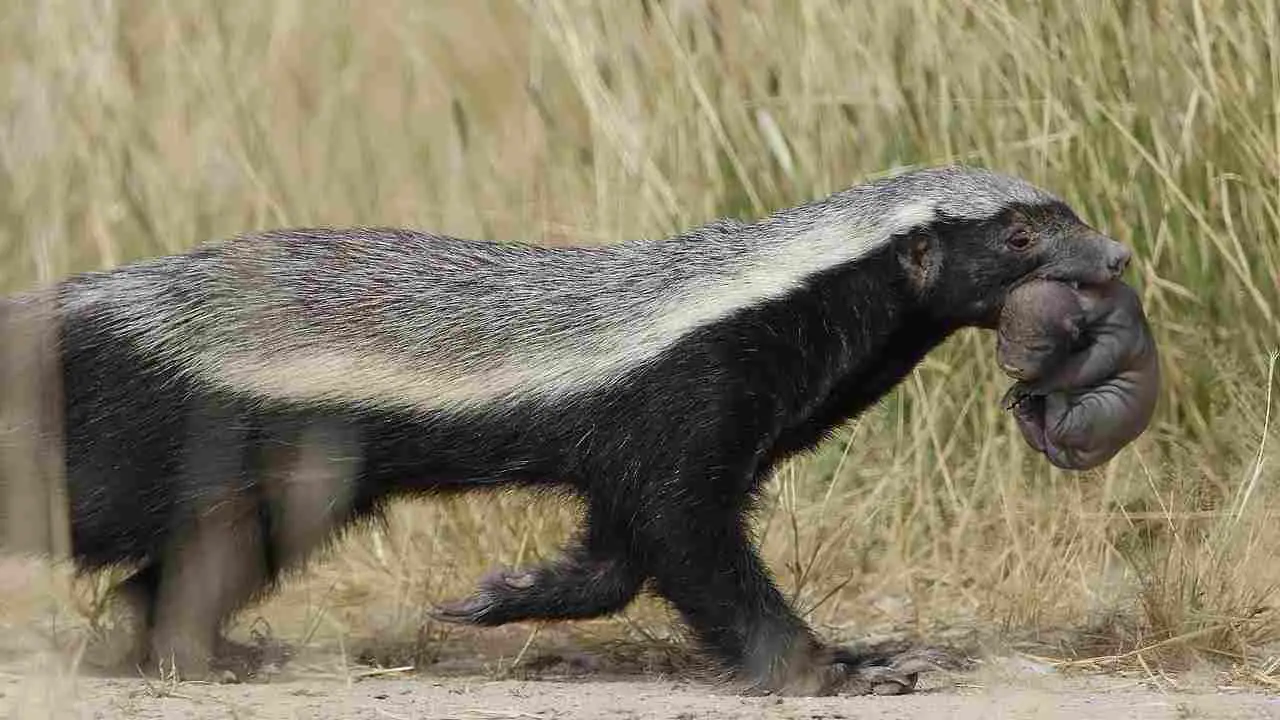
American Badger:
Female cares for and raises the young.
Young are weaned after a few months.
Honey Badger:
Female is the primary caregiver.
Young may stay with the mother for an extended period.
Comparison: Both badgers exhibit maternal care, but the honey badger may have a more extended period of association with the young.
Ecological Implications: Parental behavior influences the survival and development of offspring, affecting population dynamics in their ecosystems.
18. Proximity to Human-Inhabited Areas:
American Badger:
Can be found in rural and suburban areas.
May create burrows in agricultural lands.
Honey Badger:
Found in diverse habitats, including areas close to human settlements.
Known for raiding beehives and garbage bins.
Comparison: Both badgers can adapt to human-altered landscapes, with honey badgers having a reputation for closer proximity to human-inhabited areas.
Ecological Implications: Human interaction may impact their behavior and survival strategies, influencing local ecosystems.
19. Behavior Toward Humans:
American Badger:
Generally elusive and avoids human contact.
May display aggression if cornered or threatened.
Honey Badger:
Can be more assertive and less fearful of humans.
Known for confrontational behavior when threatened.
Comparison: While both badgers prefer to avoid humans, the honey badger is often more assertive in confrontations.
Ecological Implications: Behavioral differences may affect human-wildlife conflicts and the badgers’ ability to coexist in shared spaces.
20. Danger Posed to Humans:
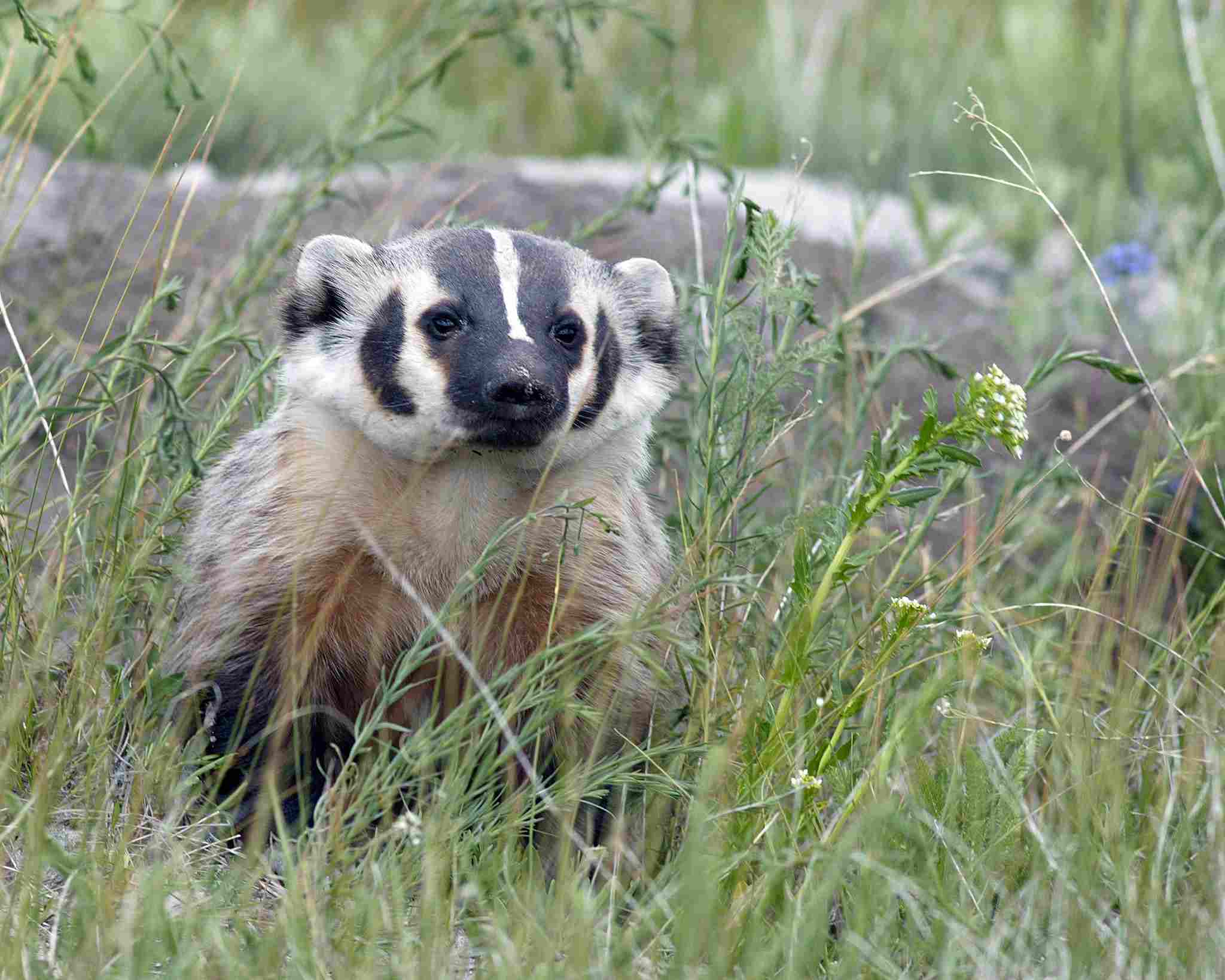
American Badger:
Rarely poses a direct threat to humans.
Typically avoids confrontations.
Honey Badger:
Can be aggressive when provoked, potentially posing a danger to humans.
Fearlessness may lead to confrontations.
Comparison: While both generally avoid conflicts, the honey badger’s bold nature can pose a higher potential danger.
Ecological Implications: Human safety concerns may influence conservation strategies and public perception of these species.
21. Associated Precautions:
American Badger:
Avoidance and allowing the badger an escape route are recommended precautions.
Observing from a distance is advisable.
Honey Badger:
Caution is advised due to their confrontational nature.
Keeping a safe distance is crucial when encountering a honey badger.
Comparison: Precautions vary, with a need for more caution in the presence of honey badgers.
Ecological Implications: Public awareness and education about precautions contribute to coexistence and the conservation of these species.
22. Conservation Status:
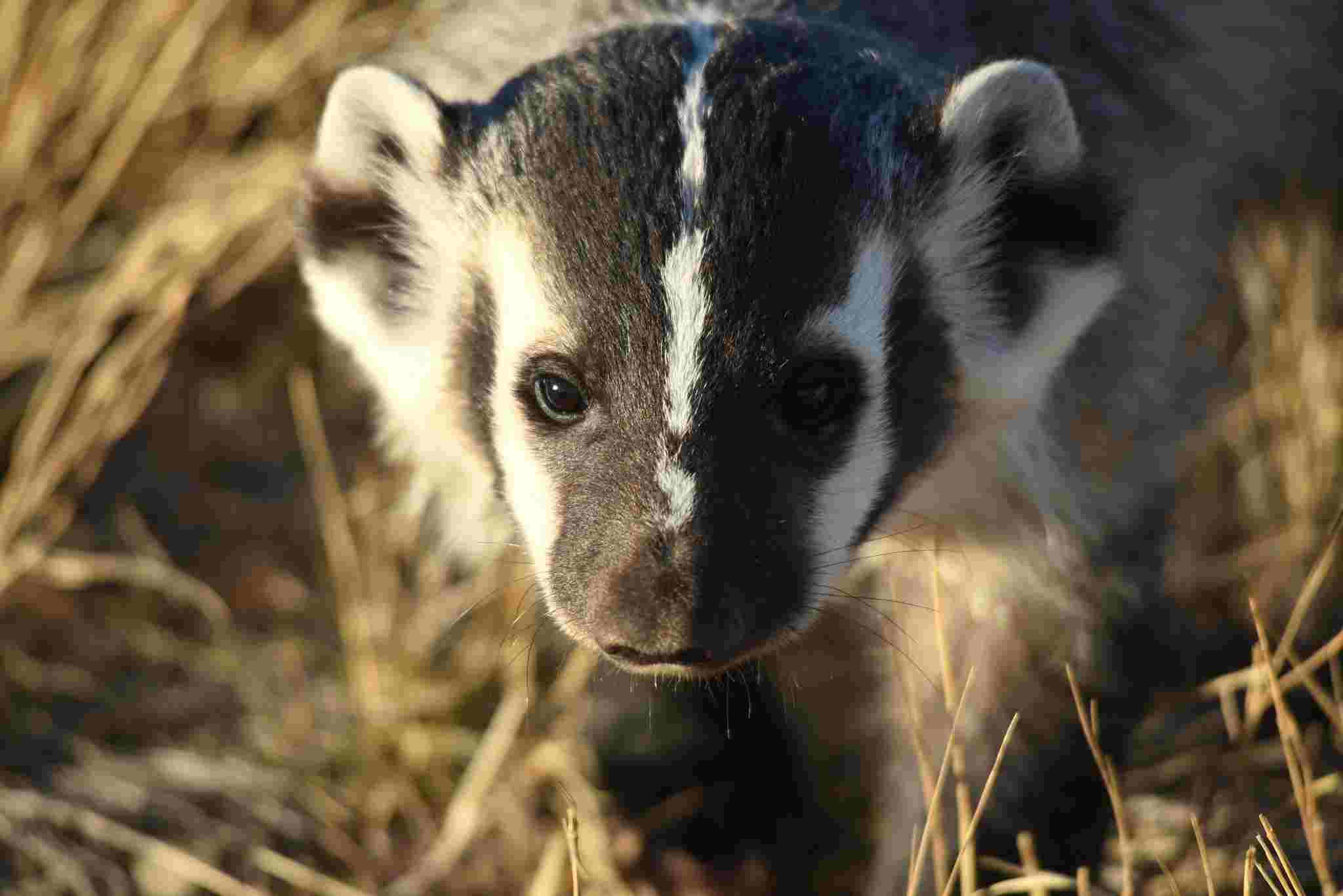
American Badger:
Generally listed as a species of “Least Concern.”
Population stability in many regions, but localized declines in some areas.
Honey Badger:
Conservation status varies across its range.
Some populations are stable, while others face threats and are listed as “Near Threatened.”
Comparison: While the American badger is generally stable, the honey badger faces regional variations in its conservation status.
Ecological Implications: Conservation efforts need to be tailored to the specific challenges faced by each badger species in their respective habitats.
Conclusion
Similarities:
Both badgers belong to the family Mustelidae.
Solitary behaviors and polygamous mating systems are common.
Differences:
Habitat preferences vary, with the honey badger displaying more adaptability.
The honey badger’s confrontational behavior contrasts with the American badger’s avoidance of conflict.
